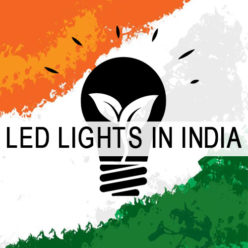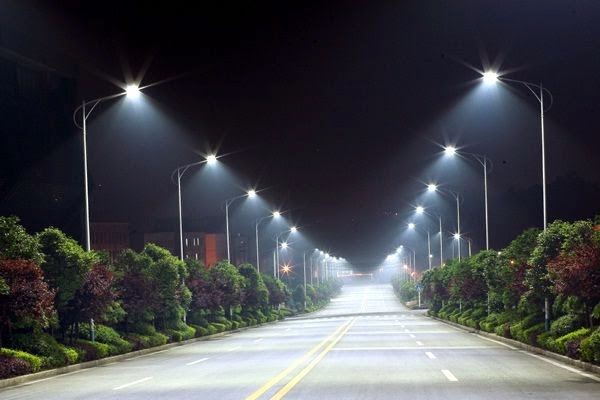India to shine bright with LED lights! The government has decided to swap all streetlights across the country to more energy-efficient and eco-friendly LED lights.
The Government of India has taken an initiative towards creating a brighter and greener future with LED lights. The Union ministry of urban development has ordered the state governments throughout the country to replace all the street lights with LED fixtures, which gives better illumination with less energy consumption. In India, there are about 27.5 million streetlights and converting all of these to LED would indeed save a massive amount of electricity. In fact, with this initiative the country is expected to slash more than 5000 MW of electricity consumption over a period of 3 years!
The decision to bring this initiative came following the release of a survey conducted by Bureau of Energy efficiency (BEE) on the street lights of India. According to this survey, over 80 percent of street lights in the country were installed in a dangerous manner without taking into consideration the pole distance, type & height of luminaire, and other important factors. The survey thus revealed that not only lighting but each and every aspect of street lights need to be overhauled.
The government has given the responsibility of supporting, financing and installing the LED system in the nation to Energy Efficiency Services Limited (EESL). It has been decided to replace all old streetlights with new LEDs in a phased manner. EESL has already begun working on specifications/requirements for suppliers to ensure installation of good quality LED streetlights.
LED streetlights to lessen the cost burden on Government:
Changing the street lighting to LED will indeed result in huge savings in both energy and cost. Even though the initial cost of installing LED lamps is a bit high, the total collective cost of electrical equipments including transformers, heavy wiring, switchgear, etc. is comparatively low than conventional lighting. Besides this, the electricity consumption bill for LED lights is much less.
Now, let’s take an example and see how much money can be saved by replacing a 50W CFL light with a 20W LED light. Suppose the average daily usage of the lights is 11 hours and electricity cost per unit is 7 rupees.
The initial price of a 50WCFL is around Rs. 1200 (Rs 450 for Bulb and Rs 750 for Body) whereas a 20W LED costs around Rs 3050. However, this difference of Rs 1850 will be covered in just over a two-year period! Here’s how:
At the end of first year, the electricity cost of CFL is Rs 1405 and that of LED light is just Rs 646. Thus the yearly savings comes out to be Rs 759. Now, CFLs need to be replaced every 12 months. So, coming to second year, the replacement cost of CFL Rs 450 is also added to electricity cost Rs 1405. That means the total cost of CFL has now become Rs 1855 whereas cost of LED light is still Rs 646. Hence the annual savings for the second consecutive year is Rs 1209. Add this amount to the first year’s savings and you will see that the total amount saved has surpassed the amount Rs 1850 by Rs 118. Over ten years, this will result in cumulative savings of Rs 7990 over use of CFL bulbs!
Replacement of one CFL with LED can save Rs 7990 in ten years. So, just imagine how much energy and revenue will be saved by replacing 27.5 million streetlights with LEDs! On top of cost and energy savings, LED street lights have several other advantages.
Benefits of LED light fixtures over traditional street lamps:
LED streetlights are more durable with low maintenance cost. Their lifespan is usually 10-15 years, which is three times the life of technologies currently adopted.
LEDs are completely safe and non-hazardous. They do not contain toxic materials such as mercury & lead, and don’t release poisonous gases if damaged.
They have the capability to cut carbon dioxide emission by 50-70%.
LEDs have sound electronic base and features smart controls. For example, these lights can be programmed to dim at light night, when traffic density on the road is usually low. This will help reduce the energy consumption significantly.
Unlike conventional streetlights which take some warm-up time once switched ON, the smart LEDs will come on with full brightness right away.
LEDs have excellent color rendering index, making it easier for drivers to detect and react to potential hazards on the road while driving.
LEDs do not attract Nocturnal Flying Insects.
Fluorescent lights tend to have lower light output during the winter months. But LEDs are not at all sensitive to cold temperatures, and they can even withstand snow and rain.
Other benefits include reduced glare, improved visibility, no double image, high light purity, precise illumination control, high heat conducting efficiency, low lumen depreciation, low light pollution, etc.
Recommended Read:


Wonderful program